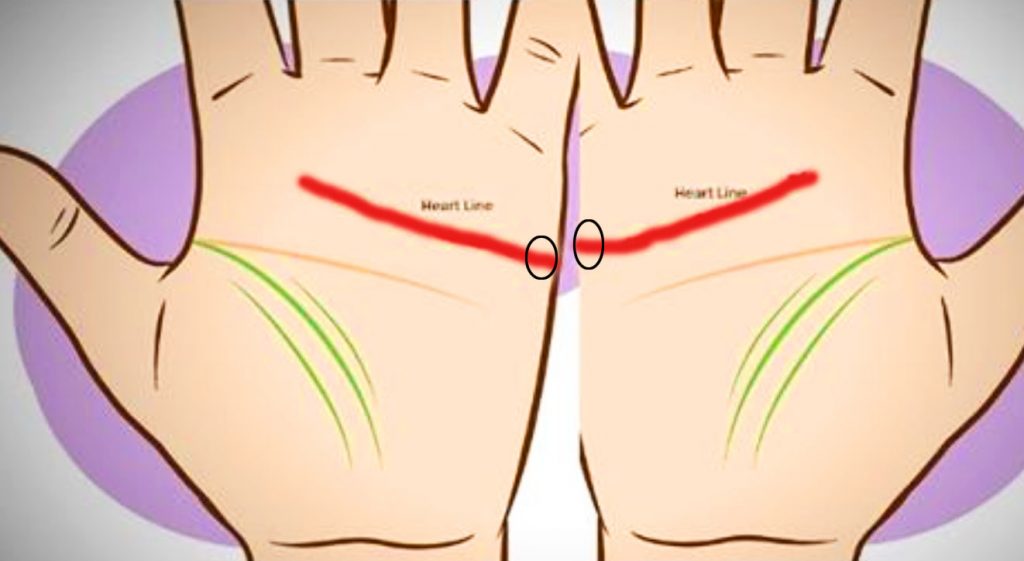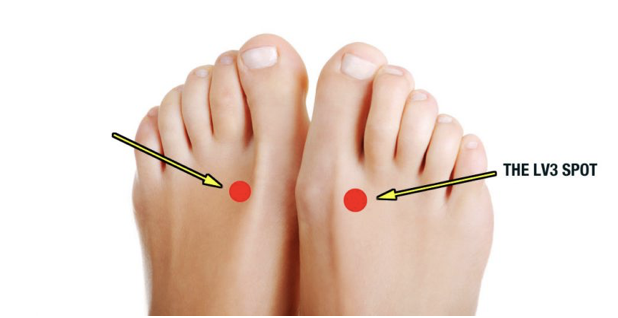This Is Actually What Your Farts Reveal About The Overall Health Of Your Body!
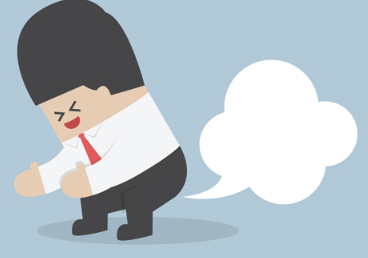
image via – shutterstock.com
There is a quick and easy way to gain insight into your overall general health. All you have to do is pay attention to your farts. It may sound strange, but your gaseous emissions can reveal a lot more than you’d ever imagine about your bodily health and wellness.
Doctors and scientists have uncovered a lot of great information on what the different odors and types of toots can reveal about what’s going on inside our bodies. In particular, it can help us know whether our digestive system and gastrointestinal tract are functioning normally, or if there may be a problem.
First, it’s best to be familiar with what exactly farts are. They’re basically basically a mix of air we ingest and gases produced by bacteria in the lower intestine. When we breathe, we sometimes end up swallowing air, and certain foods and carbonated beverages are also sources of the air that winds up in our digestive systems.
That air accumulates and needs to exit the body, which it does through either burps out the mouth or farts out the other end. The gasses in your intestine are created as the bacteria in them digest and break down sugars and starches.
Like swallowed air, it too builds up and needs to be released. If you pass gas normally and regularly it means you’re healthy and as long as you’re comfortable when it happens, it should be fine. By monitoring flatulence activities you can pick up on any changes or abnormal occurrences in your health.
This helps you to be more aware of any potential issues going on inside you that are causing your farts to suddenly smell different. If you find that all of a sudden you’re passing really stinky gas, that’s smellier than usual, this could be a sign that there’s something off balance going on inside you.
Maybe your gut bacteria is out of whack or your not eating healthy enough. If you’re experiencing a lot of frequent gas, that smells extremely foul and even you find it offensive, it could be related to a chronic problem like gastroenteritis, celiac disease, or irritable bowel syndrome (IBS).
The word “frequent” here means more than average, which is about 20 farts a day for most people. However, what is average for one person may be alarming to another since farting is quite subjective and varies from person to person.
Beyond smells, the timing of farts also matter. People who are lactose intolerant have to pass gas right after they eat anything dairy. A majority of people are lactose intolerant to a degree, so if this happens to you and it’s accompanied by a lot of discomfort, tell your doctor and get it checked out.
Frequent tooting can also be a sign of an underlying food allergy and/or wheat intolerance. Listen to your body and keep track of how certain foods make you feel right after consuming them. Furthermore, it’s important to note that not all smelly gas is bad or a sign of ill health.
It’s inevitable that some of your farts will smell nasty because about 1% of the gas generated by intestinal bacteria smells like hydrogen sulfide. Hydrogen sulfide has a distinctively acrid odor that stinks, it’s similar to that of rotten eggs, and when you release it everyone near you will notice.
The source of this malodorous gas is often healthy foods, like broccoli, beans, cauliflower, dairy and red meat, so if those foods are in your diet and what you’re passing is stinky, don’t be alarmed because it’s normal.
Once you’re familiar with what’s normal it’s much easier to spot, or rather smell, any potential issues or irregularities. So do your body a favor and familiarize yourself with the smells it produces and don’t forget to pass this along to family and friends as well. The more everyone knows, the better!
Check out the video below for further information!
Please Share This With Your Family and Friends
Apparently THIS Is What Happens Inside Your Body When You Consume Packaged Ramen Noodles!
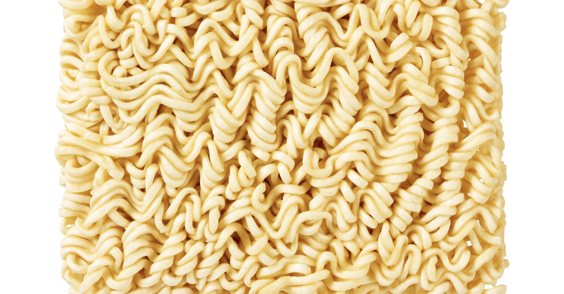
image via – shutterstock.com
Ramen noodles are a real “go-to” for people who want something satisfying, tasty and inexpensive; for instance college students are big consumers of this processed food. Although Ramen noodles come in a non-processed form, it is the processed version that is most popular.
It contains a food additive called Tertiary-butyl hydroquinone (TBHQ), which is commonly used as a preservative for cheap processed foods. TBHQ is a chemical that is derived from petroleum, and is not digestible. Because of the difficulty in digesting this chemical, a small study was performed by Dr. Braden Kuo of Massachusetts General Hospital.
Dr. Kuo is a gastroenterologist who wanted to compare the stomach’s ability to digest Fresh vs Preserved ramen noodles. People who participated in the study swallowed a “smart pill” which contains a tiny camera. The footage you will watch is the stomach trying to break down both the fresh and processed noodles, at different time intervals.
Dr. Kuo, discusses the results and what it may indicate about chemical preservatives staying in the digestive tract for prolonged periods of time. There need to be larger, longitudinal studies done concerning the consumption of this chemical in foods to determine it’s carcinogenic potential.
Studies dosing lab animals with higher doses of TBHQ does indicate the potential for forming cancerous stomach tumors, which on a personal note gives me pause. Whether the amounts found in ramen noodles and many other processed foods is deemed safe, the option to eat fresh food that doesn’t contain this chemical seems like a “no-brainer”.
Let us know what you think after watching the video!
Please SHARE This With Your Family and Friends
6 Amazing Health Benefits Of Doing Foot Acupressure

People do many things in their quest to stay healthy and feeling great. We diet and exercise, visit doctors and specialists, and take all sorts of vitamins and pills in our never ending search for cures and remedies to help treat the medical conditions, or whatever it may be, that affects our health!
However advanced modern medicine may be, sometimes it doesn’t do the job and not everyone wants to have to rely on it. Instead of using costly pharmaceuticals that often have harsh side effects, people turn to alternative homeopathic remedies that naturally balance and heal their bodies and minds.
One such treatment is called acupressure and if you’ve ever held your forehead or massaged your temples to help relieve a headache, then you’ve already engaged in the practice. Thousands of years ago the ancient Chinese developed the technique and it remains a popular alternative treatment to this day.
Acupressure is simple, all that it involves is applying pressure to various points on our bodies to stimulate blood flow to the thousands of nerves located mainly in our hands and feet.
The human foot alone has well over fifteen thousand nerves that are all inter-connected and form a network which reaches different areas, like organs and glands, in our bodies. Different pressure points correspond with certain body parts and so they can each be targeted for desired results.
People the world over have found that acupressure works wonders when it comes to alleviating aches, pains, built up stress, and tension. By using simple acupressure techniques at home they have dramatically relieved pain and discomfort caused by common ailments and you can too. All that you need to do is locate the points on the feet that are associated with the area which your issue likely stems from, and massage it!
The LV 3 point, which is also called the Tai Chong, is regarded as being one of the most powerful points. That’s because it’s connected not only to the liver, which helps clean and detoxify our systems, but many other body parts as well. The LV 3 point is located on top of the foot, near the metatarsal bones, and here is exactly how to find it.
Starting at the gap between your big and second toe, move about two finger widths back towards your ankle from there. You should notice and feel a slight depression, which is where the point is located, and if you’re touching a hard bone keep looking because it’s in a soft area. By pressing down gently and applying firm pressure to the LV 3 point on and off for 4-5 seconds at a time, for at least 2 minutes several times a day, it can help to relieve and affect the following:
1. Pain: The point is commonly used to alleviate many types of pain including, but not limited to, menstrual cramps, abdominal and back pain, headaches, stomach pain, and more. It’s believed that because the point is connected to the liver meridian and lower back, it’s very effective at relieving many additional sources of bodily pain, and so if you ever feel achy or are hurting, give yourself a foot massage on the LV 3 point for relief!
2. Depression: Many cases of depression are caused in part by our bodies and minds being overloaded with too much stress and not enough sleep. According to WebMD studies have been done which suggest that by activating the LV 3 point it helps to lessen the negative impacts of depression and anxiety. It’s believed that the point worked for the subjects who were examined by effectively lowering both their overall stress levels and instances of insomnia. This finding alone makes it worthwhile to do and try out at the very least.
3. Stress: It’s common knowledge that a good massage can work wonders at clearing our minds, thoughts, and heads (for most people!). Activating the LV 3 point naturally increases concentration and focus, leading to less stress and better decision making. Furthermore, as mentioned above studies have shown that the point decreases depression, insomnia, and anxiety, and that in turn reduces stress levels.
4. Digestion: A range of digestive issues can targeted by way of the LV 3 point. Upset Stomach, nausea, vomiting, hangovers, and indigestion can be either eliminated or improved so the next time you happen to overindulge and drink too much, try it out!
5. Parkinson’s Disease: A report released by the Northwest Parkinson’s Foundation stated that “Acupuncture point LV3 has been historically used to treat tremors such as those associated with Parkinson’s disease.” While that dealt with acupuncture at the point, as opposed to acupressure, it nonetheless shows how the spot has been used for thousands of years to target and treat symptoms, including those associated with Parkinson’s Disease. It’s one more way to help improve people’s overall health and even today it could greatly impact modern diseases.
6. Sleep Disorders and Insomnia: Massaging the LV 3 point has been shown to reduce stress and anxiety and it can also help to relax your body and calm your mind. People have used it to fall asleep faster and to reduce instances of waking up during the night. If you wish to achieve better quality sleep by way of the LV 3 point it’s important that you do the massage right before you go to bed at night.
This alternative treatment is incredibly simple, convenient, and easy to do on your own. It costs nothing, has no negative side effects, and will leave you feeling relaxed and at ease. It may sound too good to be true but it might be exactly what your body needs. You have nothing to lose if you give it a try and please pass this information on to others. Learn More: Watch the video below for additional information:
Please SHARE This With Family and Friends
This Is The Reason You Should Sleep On Your Left Side Every Night. I Had No Idea!

The average person sleeps for about eight hours a day. Over a lifetime this amounts to spending about one third of our lives asleep. It’s common knowledge that a good nights rest is vitally important for maintaining health and balance both mentally and physically. However, it’s not so well known that the position you sleep in can also greatly affect your health.
There are many different ways that people like and prefer to sleep in. The most common seem to be on either the left or right side, on your back, and curled up in the fetal position. Each one affects your health in different ways that can be either good or bad.
For example, sleeping on the back can be dangerous for those who have asthma or sleep apnea because it increases the risks associated with breathing difficulties. Sleeping on the right side can aggravate digestive problems and make them a lot worse. These negative effects and issues lead to lower quality, and less amounts, of sleep.
The left side is the best side to sleep on and it’s better than all the others in terms of the benefits it has on our bodily health. Sleeping on the left side helps us digest easier and improves the overall digestive system by allowing the body to extract nutrients and dispose of toxins faster and more efficiently.
It also affects our circulation and cardiovascular health because the heart is better able to pump downhill and the blood circulates more efficiently back to the heart. Furthermore, the position also allows for bile and wastes to travel more freely through the body and helps improve spleen function.
This results in better lymphatic drainage and more toxins leaving the body, with less overall stress and negative impacts to our health. Dr. John Douillard explains these benefits in greater detail and covers much more in the accompanying video.
It’s incredible how much of a difference the position you sleep in has on your body. If you aren’t already sleeping on your left side, you should try to make the switch as soon as possible. You can train your body to do so by switching on a light on the right side of where you sleep.
Your body will naturally want to face away from the light source and thus will turn on to the left side. There are lots of other ways that people have used to effectively change sleep positions, you just have to find out which one will work for you.
If sleeping on the left side improves health and promotes better sleep, why wouldn’t you want to do it!
Please Share This With Family and Friends
Apparently THIS Is What Happens Inside Your Stomach When Consume Packaged Ramen Noodles
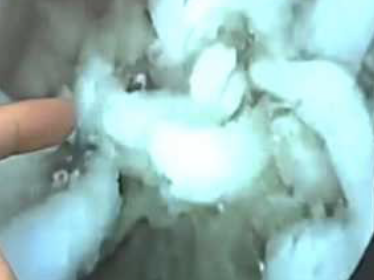
People on a budget and many college students have a go-to, fast-cooking food called Ramen noodles. The Ramen noodles discussed in this article are the processed version. They are very high in sodium, and contain TBHQ (Tertiary-butyl hydroquinone).
Utilized as a preservative for inexpensive, processed foods, TBHQ, (a biproduct of the petroleum industry), is a chemical that is difficult to digest and has questionable nutritional value. The video you are about to watch, contains an experiment done to compare the digestibility of processed vs non-processed Ramen noodles.
A pill-size stomach camera was swallowed by the subjects, in order to view the digestion over time. Dr. Braden Kuo, a gastrointestinal specialist from Massachusetts General Hospital, conducted this experiment and discusses his findings in the footage below. What you are about to see is a two-hour time lapse video in which you watch the stomachs’ attempting digestion.
In actuality the ingested camera recorded 32 hours of digestion. Watch for his conclusions and let us know if you think you will continue to ingest foods that contain TBHQ. Although further more controlled studies with a higher subject pool are needed in order to come to more definitive conclusions about the dangers of human consumption of foods containing TBHQ, other studies should be noted.
Studies done in lab rats, found that high concentrations of TBHQ caused tumors and DNA damage. There are many foods that contain TBHQ. A few that are commonly indulged in include: McDonalds chicken nuggets and fries; CHEEZE-IT Crackers; Microwave Popcorn and Pam cooking spray.
I don’t know about you, but going forward I intend to examine the food contents to see if TBHQ is included, before I indulge!
Please SHARE this with family and friends
The 8 Most Common Signs Of A Gluten Intolerance Most People Don’t Know They Have Or Just Ignore!
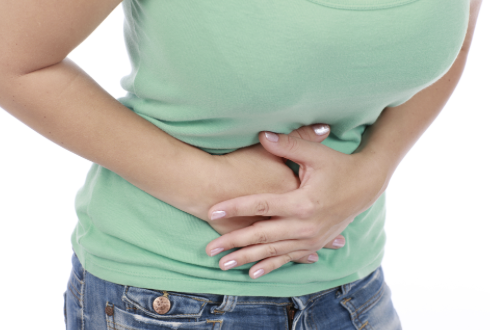
We have all been hearing about gluten free diets for a few years now. Some people think that everyone needs to be on a gluten free regimen, and others mistakenly think that it has something to do with weight loss. The truth is that gluten intolerance or sensitivity is a syndrome suffered by approximately 15% of Americans.
This number could be somewhat higher because a large majority who are somewhere on this spectrum, never will be correctly diagnosed. That is why the information contained in the video below is really quite important. You may be suffering some of the following symptoms, and have no idea what is wrong with you.
The following are 8 signs that may mean you have a sensitivity or intolerance to gluten:
CHRONIC DIGESTIVE PROBLEMS; everything from constipation to diarrhea, and bloating that comes from gas buildup without any obvious cause, can be a sign of gluten intolerance. In children particularly, constipation that doesn’t go away may be indicative of gluten intolerance.
Some of you may have touched the back of your arms and thighs and felt little bumps for years. This “chicken skin”, believe it or not, may be a condition known as KERATOSIS PILARIS; it comes from a lack of fatty acid that is a result of gluten doing damage to your gut. I would never have thought that this could be related to gluten sensitivity.
CHRONIC FATIGUE can be a function of so many disorders, and obviously too little sleep. So what might alert you to a relationship between your fatigue and gluten intolerance? When the fatigue and a kind of brain fogginess follows meals that contain gluten. With chronic fatigue, a consultation with a physician should be sought right away.
A DIZZY FEELING, almost like being drunk, where your balance is impaired is another common sign of gluten intolerance.
Having pain in multiple trigger points and joints may lead to a diagnosis of FIBROMALGIA. When coupled with chronic fatigue, rather than being Fibromyalgia, you may very well be suffering from gluten intolerance. Many diagnosed with Fibromyalgia never look further; by eliminating gluten from their diet they could end up pain-free.
MOOD DISORDERS, or mood swings associated with anxiety, depression, bipolar disease, ADD and ADHD may be triggered by gluten intolerance. The only way to find out if this is a contributing cause, is to eliminate gluten from your diet, and see if the disorder gets better.
CHRONIC HEADACHES or MIGRAINES can be caused by many things. However, it may be indicative of gluten intolerance. Changing nothing but the elimination of gluten, and seeing if the headaches are reduced or eliminated, is the way to discover if gluten is involved.
Although AUTOIMMUNE DISEASES such as: rheumatoid arthritis, ulcerative colitis, Hashimoto’s thyroiditis, Psoriasis, Multiple Sclerosis, Lupus and Scleroderma can come from many different sources, gluten intolerance is one cause that should be ruled out with all of these diseases.
After you watch the video below, please let us know if any of these signs or symptoms are something that you have suffered, and whether you think that gluten intolerance may be a possible cause.
Please SHARE this with family and friends


